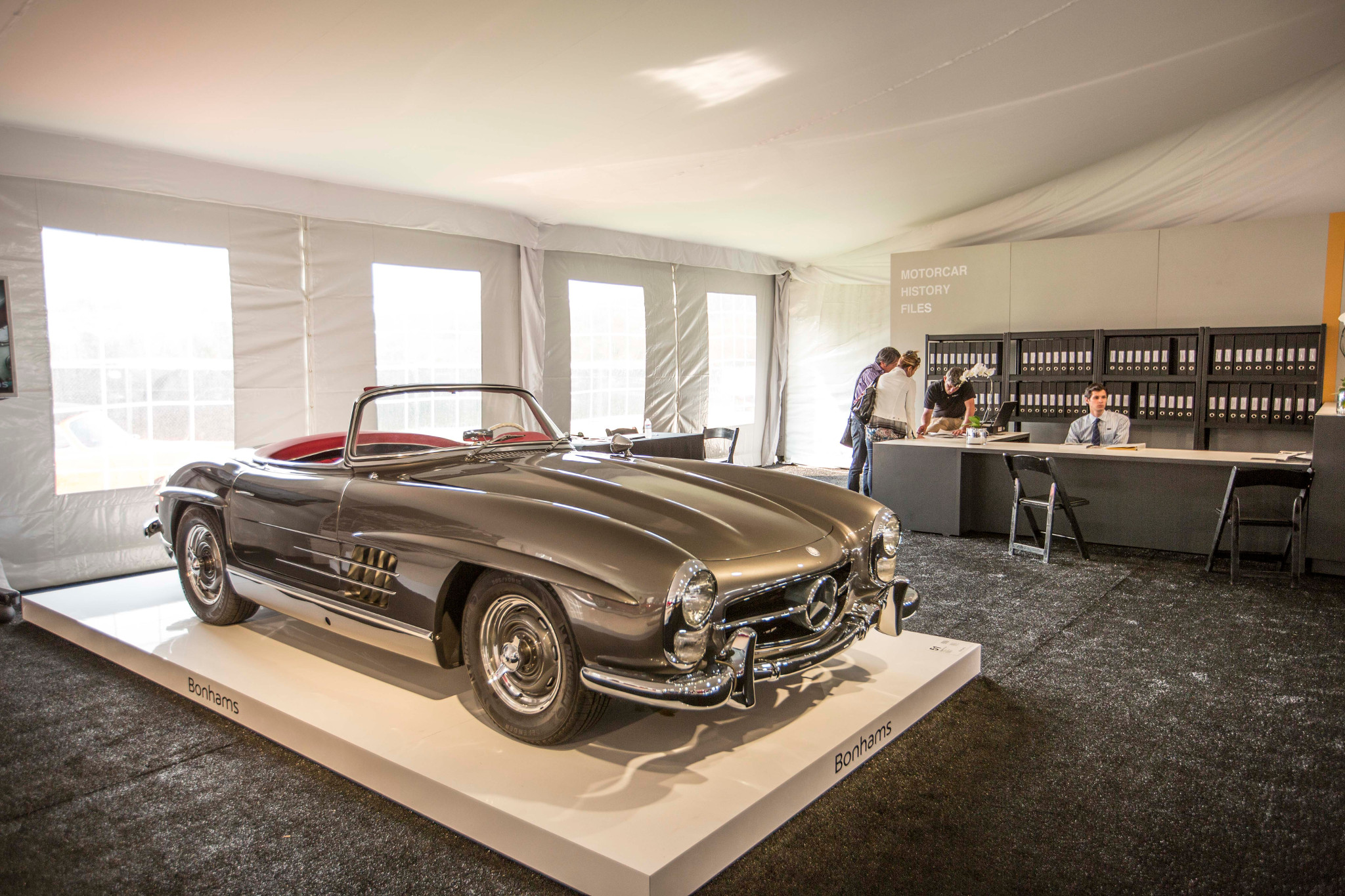Media | Articles
What does the sale of Bonhams Auction mean for its automotive division?
Three decades ago, in 1989, Robert Brooks departed Christie’s Motor Car Department to set up on his own as Brooks Auctioneers. He closed the loop on Tuesday when London private equity firm Epiris LLP acquired the successor firm Bonhams (1793) Limited, including the interest of Robert Brooks.
Brooks will be succeeded as executive chairman by Bruno Vinciguerra, chief operating officer at Sotheby’s from 2007–2015. CEO Matthew Girling and CFO Jonathan Fairhurst will remain in their current roles.
At the inception of Brooks Auctioneers, the collector car market was on the cusp of a bust. It is a credit to Robert Brooks’ persistence, and that of his financial backers, that the venture survived, let alone expanded.

The new owners, private equity-focused Epiris Fund II advised by Epiris LLP, specialize in acquiring control of mid-sized, British-based companies either through leveraged buyouts or acquisitions of portions of larger companies. It then works with management to enhance the companies’ operations, spin off components, and even expand through acquisitions. It’s financial engineering, phrased as “transformative strategy.”
Marketplace
Buy and sell classics with confidence
The portfolio of present and past Epiris investments is diverse, ranging from restaurants (the U.K. operations of TGI Friday’s) to real estate, bowling alleys, shoes, ferry boats, and offshore oilfield cranes to “security paper” used to print money and security documents like passports. Its most momentous acquisition appears to be its recent acquisition of 50 separate magazine titles from Time Inc. UK, now rebranded TI Media.
What this means for Bonhams Motor Car department waits to play out. It is consistent with other recent moves among collector car auction houses, including RM Auctions’ link with Sotheby’s a few years ago and the recent acquisition of the Leake Auction Company by heavy equipment auctioneer Ritchie Bros.


The press release from Epiris includes this timeline of Bonhams history:
“From its origins as a Georgian auctioneer, Bonhams has grown to become a vibrant 21st century brand and one of only three truly global full-service auction houses,” it reads. “The company traces its history from 1793, when it was founded in London’s Covent Garden by Thomas Dodd, a famous print dealer of the day. Dodd’s apprentice, George Jones, assumed ownership in 1817 and in 1850s went into partnership with George Bonham. During the 1870s, the Bonham family became the sole owner.
“The journey to the modern company started in 2000 when Bonhams became Bonhams & Brooks, after its acquisition by the auction house Brooks, founded in 1989 by a former director of Christie’s, Robert Brooks.*
“The following year, Bonhams & Brooks merged with Phillips Son & Neale to form a new company, Bonhams, based at 101 New Bond Street.
“In 2002, Bonhams purchased Butterfields, a leading auction house on the west coast of the U.S., founded in 1865.**
“As part of a phased programme of international expansion, Bonhams opened an office in Hong Kong in 2007. Seven years later, in 2014, it established an East Asian HQ and showroom in Hong Kong in One Pacific Place. Bonhams East Asian and Southeast Asian network now also includes offices in Beijing, Taiwan and Singapore.
“In 2008, Bonhams in New York moved to new showrooms on the corner of 57th Street and Madison Avenue.
“In 2009, Bonhams announced that it had taken market leadership in 10 leading areas of the British art market for the first time.
“In 2013, Bonhams opened its new headquarters at 101 New Bond Street, a state-of-the-art building, designed by Lifschutz, Davidson Sandilands; and in 2015 it completed a seven-figure refurbishment of its Knightsbridge saleroom.
“In 2016 Bonhams held its first online-only auction. The sale—Watches and Wristwatches from the Collection of a European Nobleman—was 100 percent sold.
“In 2018 Bonhams is acquired by Epiris, the UK-based private equity company.”
A few additions to the timeline: In 2000 or so, the entire Motorcars department of Sotheby’s led by Malcolm Barber decamped to Brooks, followed in 2007 by the addition of nearly the entire international staff of Christie’s International Motor Cars Department as Christie’s exited the collector car market (or the staff exited Christie’s, depending upon point-of-view.)

Bonhams is collector car-centric. Both Robert Brooks and Malcolm Barber made their auction records selling old cars. But both are no longer part of Bonhams active management team.
Motor Cars is a crucial contributor to Bonhams’ turnover, amounting to about $224 million of the $710 million total noted in the Epiris release—that’s 31 percent.
The glitzy Bonhams showrooms in New York, Los Angeles, San Francisco, Hong Kong, Edinburgh, and Sydney don’t sell cars; the London main saleroom on Bond Street does so only once a year.
The collector car auction field has no shortage of strong competitors ranging from RM Sotheby’s, Gooding & Company, and Artcurial, to H&H and Mecum in the large middle market.
Epiris is a financial opportunist with, based upon some of their investment case studies, only a three- to five-year horizon. It will pursue opportunities for high-margin profitable growth at Bonhams. The Epiris press release emphasizes Bonhams’ strength in Asian art, pictures, and jewelry, as well as in motor cars, and it may be in those areas where Epiris and Bonhams management concentrate. Only time will tell, but according to Bonhams head of public relations Sung-Hee Kim, the Motor Cars department will carry on “business as usual.”









